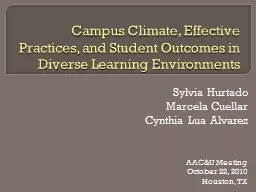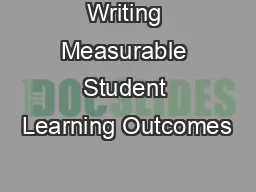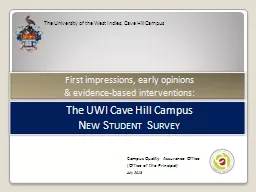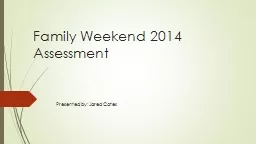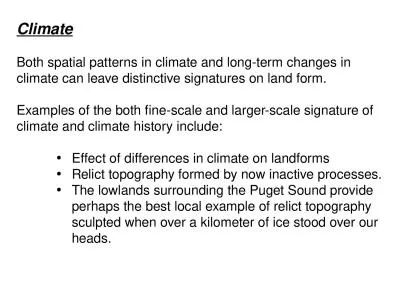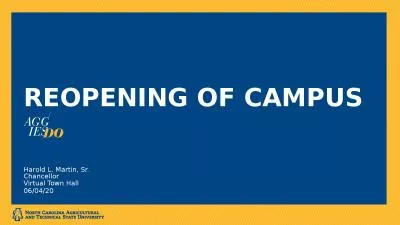PPT-Campus Climate, Effective Practices, and Student Outcomes i
Author : calandra-battersby | Published Date : 2017-10-03
Diverse Learning Environments Sylvia Hurtado Marcela Cuellar Cynthia Lua Alvarez AACampU Meeting October 22 2010 Houston TX Overview Purposes goals amp Key Features
Presentation Embed Code
Download Presentation
Download Presentation The PPT/PDF document "Campus Climate, Effective Practices, and..." is the property of its rightful owner. Permission is granted to download and print the materials on this website for personal, non-commercial use only, and to display it on your personal computer provided you do not modify the materials and that you retain all copyright notices contained in the materials. By downloading content from our website, you accept the terms of this agreement.
Campus Climate, Effective Practices, and Student Outcomes i: Transcript
Download Rules Of Document
"Campus Climate, Effective Practices, and Student Outcomes i"The content belongs to its owner. You may download and print it for personal use, without modification, and keep all copyright notices. By downloading, you agree to these terms.
Related Documents

